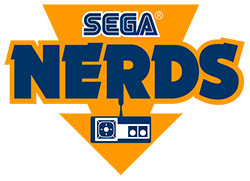
Stairway to emerald: how I learnt to love Sonic Adventure’s soundtrack
I’ve heard Sonic Adventure described as a ‘flawed gem’ on a number of occasions, and that’s probably a fair summation of its legacy. Back in 1999, watching those credits finally roll, I distinctly remember coming away unimpressed with many of Sonic Team’s creative decisions, and lamenting what could have been had SEGA afforded the game another six months or so in development, given the release candidate’s many rough edges.
Chief among my misgivings were reservations about the game’s widdly guitar soundtrack, provided by the anathemous ‘Crush 40‘, which I felt, at the time, to be a significant and unwelcome departure from what had gone before.

Prior Sonic games had been a somewhat mixed bag, aurally. The original Mega Drive outing featured a pretty standard, chirpy 16-bit fare, but Sonics CD, 2, 3 and Knuckles were set to very interesting and varied soundscapes. From Hilltop’s winding harmonica, to the freestyle jazz of Hydrocity’s second act, nobody could accuse Sonic Team of being afraid to experiment.
But recently, I’ve developed a new-found appreciation for Sonic Adventure‘s musical virtues. Pretty much anything with vocals remains utterly unbearable, including overall theme ‘Open Your Heart’ and the jingles for individual characters, but much of the music penned for boss fights and individual stages is far more expertly crafted than it first appears, and becomes more and more likable as you begin to appreciate that fact. The trick, it seems, is to listen to them in isolation, as, weirdly, many of the tracks almost seem to lose something when paired up with the high-octane busyness of the game itself.

Listening to them sans gameplay does little to remedy their cheesiness – you’re not turning turning water into wine or One Direction into Radiohead, but give Sonic Adventure‘s soundtrack a fair shot, and you may just find yourself coming away rather more impressed with the work of Crush 40, and specifically lead guitarist and group mastermind, Jun Senoue, than you had been previously.
Fretboard fanatics might be interested to learn that Senoue uses a number of signature guitars built by Japanese instrument manufacturer, ESP, featuring various high output (i.e designed for hard rock and similar) pickups. You can find a full list of his axes, including the one pictured on the right with the awesome Sonic decal on the body, and trademark red shoe on the headstock, here. It’s arguably Senoue’s most famous, and can be seen played by him live in footage here.
I’d draw skeptics’ attention particularly to ‘Sky Deck A Go! Go!‘, ‘Windy & Ripply’ and ‘Crank The Heat Up‘. The latter is featured around the middle of Sonic Adventure’s Final Egg level, at which point Sonic has been sucked into a confined tower structure that he must ascend. The guitar tone here is awash with heavy reverb and harmonisation, resulting in music that sounds like it’s being played in a similarly confined space. Thought has clearly gone into that piece, as regards tying it in very closely to what’s happening on-screen, and the production is impeccable, if a little overdone. This is just one example disproving my previous assertion that Crush 40 had simply blazed their way up the pentatonic scales with little to no ear for musicality or context, a la the awful Dragonforce. As an aside, I apologise on behalf of the British people for that band’s continued existence.
In addition to withdrawing my objections to Crush 40 and Senoue’s work, I also now feel that perhaps I unfairly overlooked the handful of in-game cuts that do properly hark back to Sonic’s previous melodical forays. ‘Windy Hill‘ from Windy Valley, and Mt. Red: A Symbol of Thrill, from Red Mountain, sound more in line with what I expected back when I booted the game for the first time; tunes of a similar ilk to Sonic’s 16-bit glory days, but of vastly superior quality, having been freed from the dual constraints of miniscule cartridges and the Mega Drive’s Yamaha YM2612 sound chip.

I was a relatively late bloomer as regards music, not buying my first album until age 17, but I’m quite sure that my tastes have been informed by a myriad of videogame soundtracks. True, my penchant for ’90s alternative rock seems at odds with an adolescence spent subconsciously absorbing Crush 40’s work, but some of my guiltier pleasures – acts that I won’t name-check here – aren’t a million miles away. Sonic Adventure’s soundtrack doesn’t deserve to go down in the annals of videogame music history in quite the same way as Nobuo Uematsu‘s sterling Final Fantasy series compositions, for example, but it gets far worse a rap than it deserves.
That Sonic Heroes theme still makes me vomit a little in my mouth, however.






